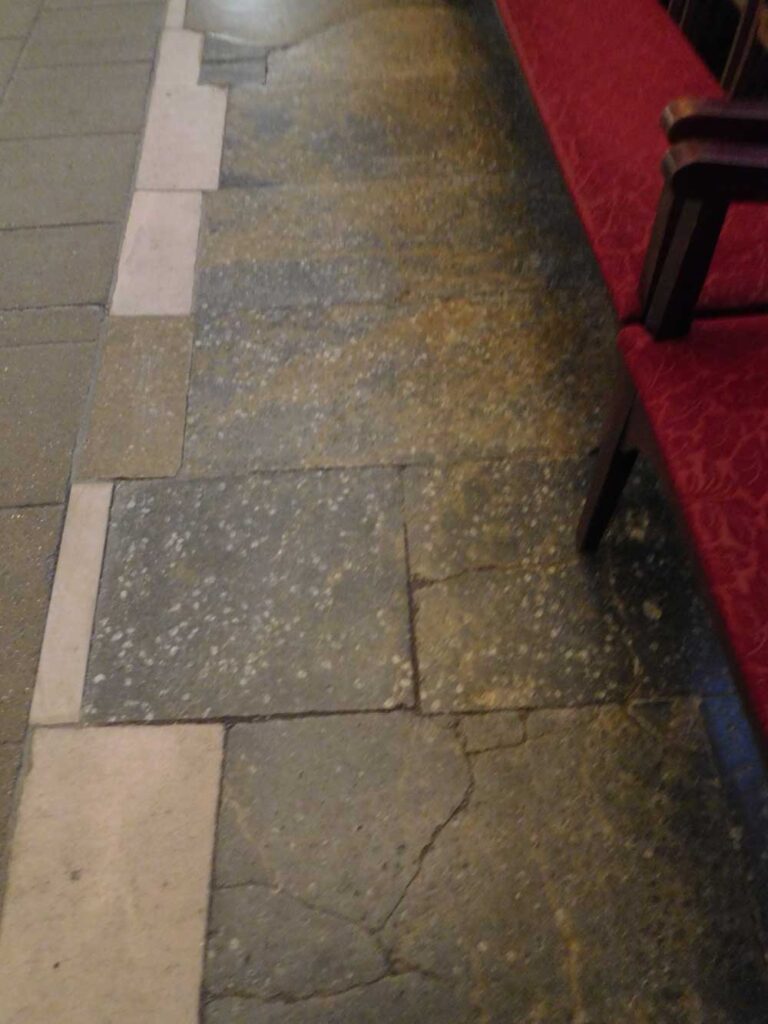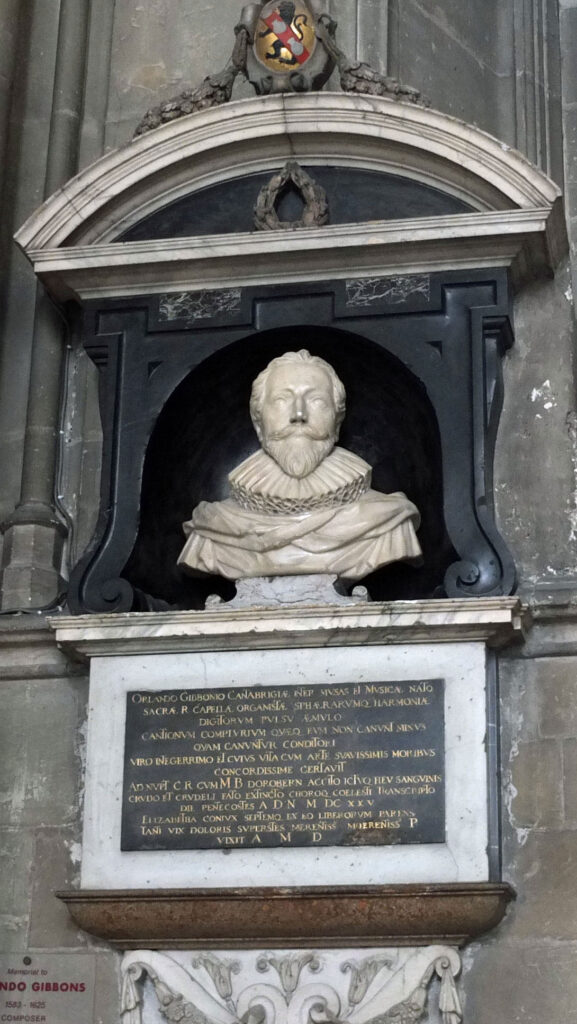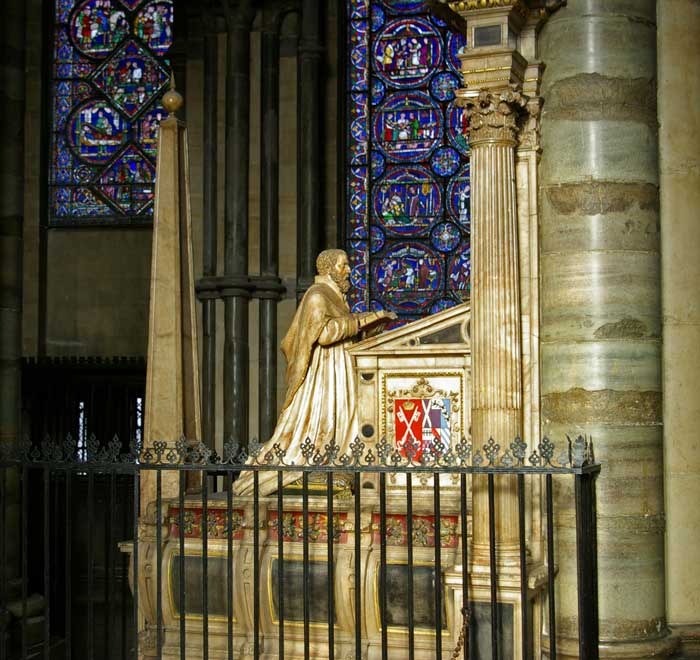For Floors
Basics
Geology: Weald Clay Formation
Rock unit: Freshwater limestone
Age: Lower Cretaceous
Provenance: West Kent
Where to see examples
Concentrated in areas of the eastern ambulatory. Also found in the cloisters
For Memorials
Geology: Weald Clay Formation
Rock Unit: Freshwater limestone
Age: Lower Cretaceous
Provenance: West Kent
To be found in:
Description
These cathedral floors and steps contain numerous paving slabs of limestone extracted from the Weald Clay Formation. Bethersden Marble is the name given to a limestone found in the eastern Weald in small isolated outcrops within the beds of the Weald Clay. The stone has been extracted as a building stone, a paving stone and as an ornamental stone from numerous shallow pits or quarries many of which were in the vicinity of the village of Bethersden.
The stone is composed largely of the shells of freshwater snails (gastropods) set in a fine matrix of lime-rich silty clay. The snails are of the species Viviparous fluviorum. The Viviparous snail was formerly known as Paludina, hence the reference in the older literature to the stone being the larger Paludina limestone. These shelly beds, representing snail-rich ponds and lakes, occur throughout the Weald Clay outcrop in Kent and Sussex. The stone can be known by other local names. As a rough rule of thumb, stones with snail shells predominantly greater than 1cm are usually from the Weald (Kent and Sussex) and stones with snail shells less than 1cm are usually from Dorset (Purbeck Marble).
The calcite shell outlines of the snails are usually very clear. The shell interior can be the same as the dark and cloudy matrix, it can be a crystalline white or a bit of each. When the snail dies the soft organic parts rot away leaving a void. The void can be filled by the surrounding lime-rich mud (micrite) or, if remaining a void long after burial, carbonate-rich groundwaters moving through the beds may precipitate white crystalline calcite (sparite) within the shell. Sometimes the lower section of the shell is first filled with mud and later the upper void is filled with a calcite. When the piece of stone is removed from the ground the position of the mud/calcite divide can act as a ‘way-up feature known to geologists as a geopetal indicating which way up the limestone was originally deposited.

Description
Shelly limestones that take a good polish were much in demand as decorative stones from the late twelfth century onwards. While Purbeck Marble was able to fulfil much of the demand in the south-east of the country, a source from the Wealden District could have the added advantage of a local supply at less cost.
From the regional use of Weald Clay limestones we know that much stone for church building and paving etc, was locally quarried around Bethersden. However, similar stones, with large and sometimes small, snail shells have been quarried from many locations in the Weald. In West Sussex the stone goes by local names such as Petworth Marble, Laughton Marble, Charlwood Marble as well as the generic Sussex Marble. While a local source to Canterbury is the most likely provenance of a Weald Clay limestone it is possible that identical stone could be brought to Kent by ship from the south Sussex coast. There are many monumental and architectural elements in grand houses and churches throughout the Wealden District made from these limestones. It is unclear whether there were many local workshops or a few regional ones. Prestigious commissions may also have sourced stone to be transported to London for cutting and assembly.
The limestone is relatively soft and can be cut easily with an iron saw. The act of polishing the marble is more labour intensive. A mild abrasive will provide a flat surface that can be polished using mixtures including materials such as clay, beeswax and animal fats.


